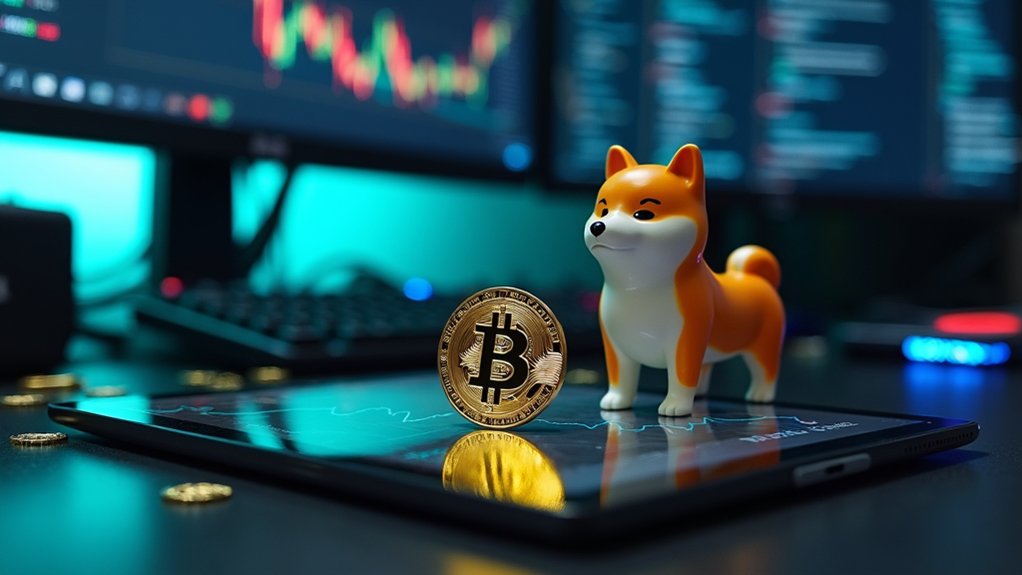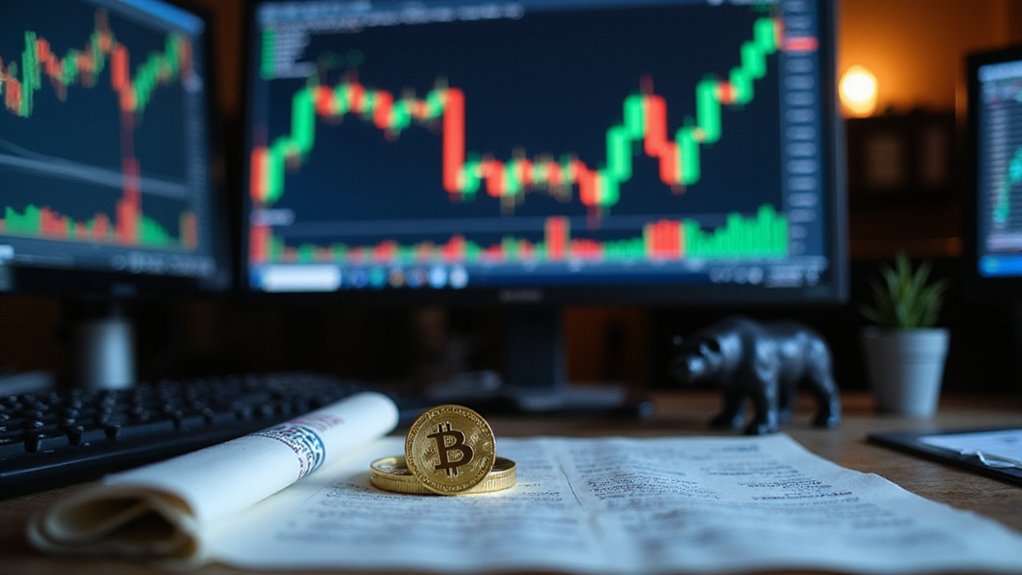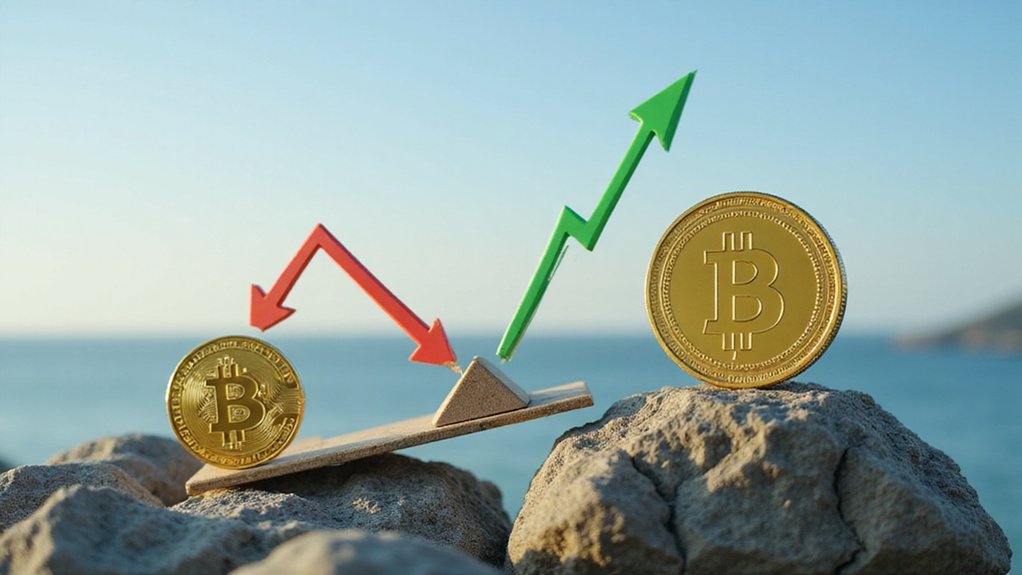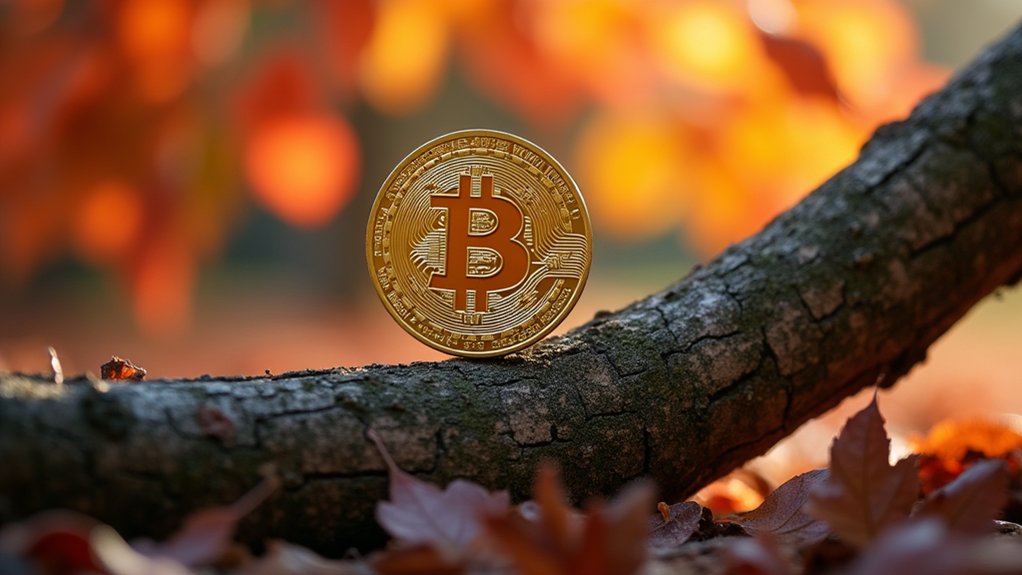Creating a meme coin involves selecting a recognizable internet meme as foundation, implementing it on established blockchain infrastructure (typically Ethereum’s ERC-20), developing compelling branding assets, and cultivating an engaged community through social media. Technical implementation requires minimal complexity when leveraging existing frameworks, while regulatory compliance remains essential despite the playful nature of these ventures. The alchemy of transforming cultural phenomena into multi-billion-dollar market caps—however improbable—awaits those who master this curious intersection of internet culture and distributed finance.

Why, in a financial ecosystem rife with sophisticated technologies and legitimate investment vehicles, has the meme coin emerged as a peculiar yet undeniably powerful force?
In a sea of financial sophistication, meme coins rise as improbable titans—internet culture transmuted into billion-dollar phenomena.
The answer lies in the intersection of internet culture, distributed finance, and community dynamics—a curious alchemy that has transformed jest-based tokens like Dogecoin and Shiba Inu into multi-billion-dollar market phenomena.
Creating a meme coin begins with selecting an appropriate internet meme or cultural phenomenon as foundation.
This choice isn’t merely aesthetic; it establishes the coin’s identity and potential community resonance.
The selected meme should possess recognizability and evoke positive emotional responses—qualities that translate to community enthusiasm (the true north star of meme coin valuation).
Technical implementation follows conceptualization.
Most creators opt for established blockchain infrastructures—Ethereum’s ERC-20 framework being the predominant choice—rather than developing proprietary networks.
This approach substantially reduces development complexity while ensuring wallet compatibility and exchange accessibility.
Smart contracts, though not strictly necessary for basic functionality, provide avenues for additional utilities beyond mere transfer of value.
The development of branding assets—logos, tokenomics documentation, and web presence—warrants particular attention.
A compelling visual identity coupled with a memorable ticker symbol can differentiate a meme coin in an increasingly saturated market.
The whitepaper, while perhaps less technical than those of utility-focused cryptocurrencies, should nonetheless articulate a coherent vision.
Many of these coins also incorporate humorous themes in their websites, reflecting their playful nature in the crypto market.
Be aware that regulatory bodies in some jurisdictions have taken strict measures against meme coins, with Thailand’s ban in early 2021 serving as a cautionary example for creators.
Community cultivation represents the most critical—and often most elusive—aspect of meme coin creation.
Social media engagement across platforms frequented by cryptocurrency enthusiasts becomes the primary vector for awareness generation.
Strategic partnerships with influencers can accelerate adoption, though such arrangements must be transparently disclosed to maintain community trust.
Meme coins often gain significant traction through their ability to build social currency despite potentially volatile performance in the market.
Regulatory considerations cannot be dismissed, despite the irreverent nature of meme coins.
Compliance with securities laws and anti-money laundering regulations remains essential, irrespective of a token’s humorous origins.
Post-launch, sustained community engagement through regular updates and responsive governance determines long-term viability.
The most successful meme coins shift from novelty to community-owned projects with evolving use cases—a proof to how even humor-based tokens can develop substantial economic gravity.
Frequently Asked Questions
Are Meme Coins Legally Regulated in All Countries?
Meme coins occupy a regulatory patchwork globally, with wildly inconsistent oversight across jurisdictions.
Thailand has explicitly banned these digital curiosities, while the U.S. SEC (circa 2025) generally exempts them from securities classification.
Most nations exist in regulatory limbo—neither prohibiting nor specifically addressing meme coins within broader cryptocurrency frameworks.
This legal ambiguity, compounded by cross-border blockchain technology, creates significant compliance challenges for creators and investors maneuvering the international regulatory labyrinth.
What Percentage of Meme Coins Fail Within the First Year?
The mortality rate of meme coins is staggeringly high, with most failing to survive their inaugural year.
While precise statistics fluctuate, approximately 97% of all meme coins eventually fail, with the average lifespan hovering around twelve months—a third of what typical crypto projects achieve.
This ephemeral existence stems from their foundation in transient social phenomena rather than substantive utility, leaving investors with worthless tokens once the inevitable hype dissipation occurs.
The pattern repeats with remarkable consistency across blockchain ecosystems.
How Much Does Marketing Typically Cost for Successful Meme Coins?
Successful meme coins typically allocate between $5,000 and $20,000 for marketing initiatives, though this figure varies considerably based on project scope and ambition.
The financial outlay encompasses influencer collaborations (ranging from modest $300 publications to six-figure campaigns), digital advertising across multiple platforms ($3,000-$50,000), content creation ($500-$5,000 per piece), and community engagement activities ($1,000-$10,000).
The judicious distribution of these resources—rather than merely the quantum—often determines a project’s trajectory in the notoriously fickle crypto marketplace.
Can Existing Cryptocurrencies Be Converted Into Meme Coins?
Existing cryptocurrencies cannot be directly “converted” into meme coins—this reflects a fundamental misunderstanding of tokenomics.
Rather, one typically exchanges established cryptocurrencies (BTC, ETH) for newly created meme tokens on exchanges.
The process involves liquidity provision, not transformation of the underlying asset.
While one might leverage existing crypto capital to fund meme coin development and marketing, the original assets remain intact.
(A curious conflation of investment with metamorphosis, isn’t it?)
Do Exchange Platforms Charge Differently for Listing Meme Coins?
Exchange platforms indeed price meme coin listings differently, though not necessarily because they’re meme coins per se.
The fee structure typically follows each platform’s standard practices—ranging from Coinbase’s surprisingly fee-free approach to Binance’s potential seven-figure asking price.
What differentiates meme coins in this process isn’t their classification but rather their perceived legitimacy, compliance readiness, and community traction.
Smaller exchanges often provide more affordable entry points, albeit with correspondingly diminished visibility and liquidity benefits.









